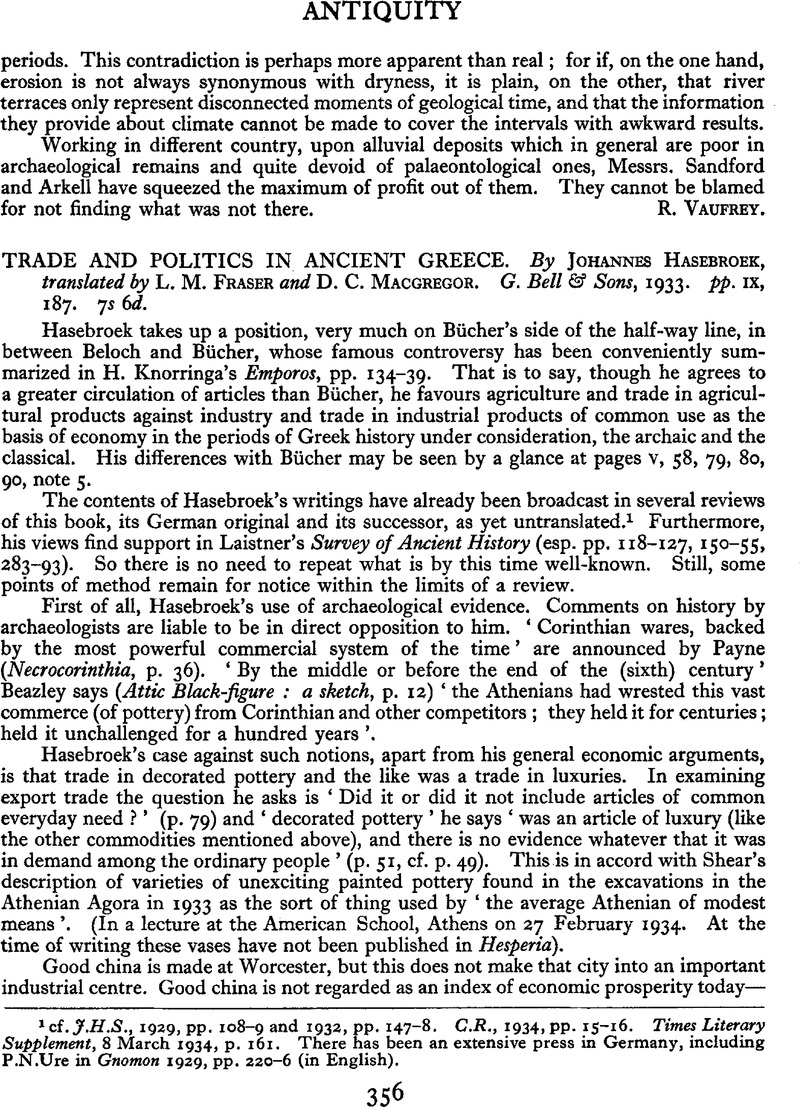No CrossRef data available.
Published online by Cambridge University Press: 02 January 2015

1 cf.F.H.S., 1929, pp. 108–9 and 1933, pp. 147–8– C.R., 1934, pp. 15–16. Times Literary Supplement, 8 March 1934, p. 161. There has been an extensive press in Germany, including P.N.Ure in Gnomon 1929, pp. 220–6 (in English).
2 On the view that this was the main use of vases cf. Beazley op. cit. p. 12.
3 For Panathenaic amphorae cf. BeazIey in J.H.S., 1931,p. 299.
4 cf. Myres, J.L., Who were the Greeks ?p.599, n.34 and the references there cited.Google Scholar
5 cf. Payne, , op. cit. p.265.Google Scholar
6 Hasebroek wrote ‘krug’; the translators write ‘oenochoë’. It is sometimes described as an aryballos! Hoppin lists it correctly in his Attic Black–figure Vases, p. 473 (with drawing). Cf. Waldhauer’s 1914 guide to the Hermitage vases p. 114.
7 Metics were not all as ‘homeless’ as Hasebroek repl;esents (p. 43). The metics in the Athenian army in 431 B.C. (Thuc. 2. 31) were fighting for ‘hearth and home’ as much as any Athenian citizen, though this does not mean that their interest in the war was of the nature suggested by Cornford—struggle for markets and so on. (Thuc., Mythistoricuc, pp. 20–1).